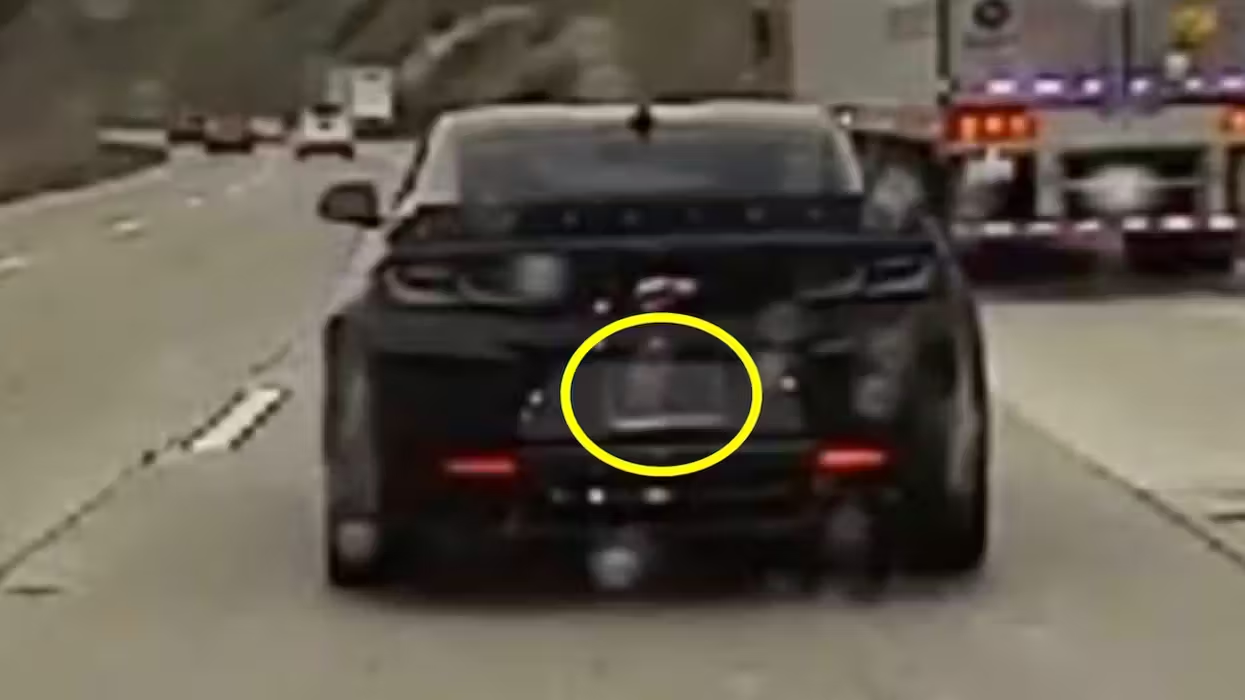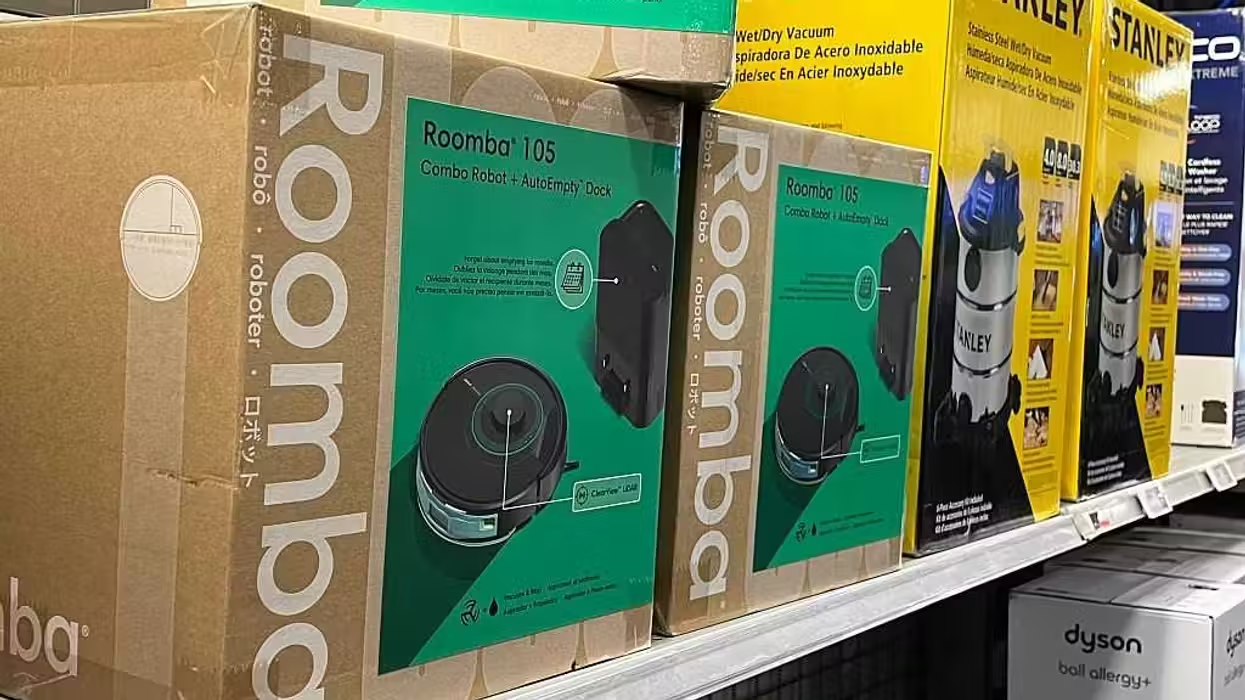Armor-piercing guided weapons systems have made a dramatic increase in in Syria over the past several weeks, giving reeling rebel fighters an advantage against President Bashar Al-Assad's loyalist army. The catch: The weapons are being supplied by multiple nations and some have already landed in the hands of Al Qaeda, TheBlaze has learned.
The anti-tank guided missiles (ATGMs), which are portable and can be shoulder or tripod mounted, set the stage for a possible shift in the war, especially in the upcoming months when U.S. and European aid is expected to increase, U.S. and Western intelligence officials told TheBlaze.
"It's something that has allowed the rebels to sustain themselves," said a U.S. official familiar with the weapons systems and supplies. "It's been an important element in their arsenal in an effort to capture and hold their territory. Three months ago, the regime was taking over territory but in the past few weeks we are seeing a shift."
Assad's ground forces have been using tanks against civilian and rebel forces to gain and hold ground in areas heavily populated with opposition. So far, the United Nations estimates that more than 100,000 people have been killed in the past two years of the civil war and Assad's forces have used chemical weapons against civilians. Although, Assad's army also has ATGMs, they pose a minimal threat to the rebel ground forces, which don't have tanks.
While helping the rebels, these weapons systems also are believed to be ending up in the hands of Al Qaeda affiliated groups like Al Nusra, a designated terrorist group that also is one of the strongest rebel factions fighting the Syrian loyalist army.
"The (ATGMs) introduction is helping the resistance groups in the fight, but Assad’s folks still outgun them heavily," said Steven Bucci, former assistant secretary of defense under Donald Rumsfeld and senior defense analyst at The Heritage Foundation. "I have not seen anything that specifically says Al Nusra has does not have ATGM’s, but they are still the most effective force against Assad, so I have to assume they have some... as the resistance continues to chip away at the regime, because the most radical elements of the resistance are the most potent, they will begin to seize more and more weapons. This is a huge negative for stability in the region."
Bucci told TheBlaze that the anti-tank missiles will not be a game changer but will buy the time the rebels need to hold off Assad's forces. Neither the U.S. or European allies are pushing to move in "truly heavy weapons" like tanks and ManPads (use full phrase on first reference and include short form in parenthesis) to the rebels, he added.
The following video shows a Milan ATGM being assembled by rebels in an undisclosed location in Syria. The video was posted to YouTube on July 21, 2013 and is one of numerous videos being studied by intelligence and national security analysts. Analysts who spoke to TheBlaze said they were not sure about the origin of this particular ATGM but the French air-dropped this make and model to Libyan rebels in 2011.
Sources of the Weapons
A report by IHS-Jane's, a British based defense and national security consultancy, has analyzed the weapons systems in videos uploaded by rebel factions to the Internet since May. The report, a copy of which was obtained by TheBlaze, shows rebel forces "used guided missiles only sporadically until late May, when a notable increase in the number ATGM videos suggested certain groups were receiving consignments from foreign supporters."
 Syrian rebels have received shipments of weapons from Gulf allies, particularly anti-tank and anti-aircraft missiles. This June file photo citizen journalism image provided by Edlib News Network, ENN, has been authenticated based on its contents and other AP reporting. (AP Photo/Edlib News Network ENN, File)
Syrian rebels have received shipments of weapons from Gulf allies, particularly anti-tank and anti-aircraft missiles. This June file photo citizen journalism image provided by Edlib News Network, ENN, has been authenticated based on its contents and other AP reporting. (AP Photo/Edlib News Network ENN, File)
Jane’s has analyzed more than 60 ATGM videos posted on the internet showing the various types of anti-tank missile systems now showing up in Syria. Military analysts are using the open source videos to trace the various manufacturers and triangulate the nation's supplying these systems to the fighters.
Russian, Chinese and European weapons systems are making their way from their nation hosts into Syria via Turkey, the report suggests. It notes that "the information on the location and type of weapons used in the videos comes from the groups that posted the footage and cannot be independently corroborated."
The most prevalent anti-tank weapons system used in Syria is the Russian 9M113 Konkurs (AT-‘Spandrel’), which was primarily used by rebels affiliated with the 'moderate Salafist militant groupings' connected to the Syrian Islamic Front. The group is believed to be supported by the government of Qatar, which supplies the weapons shipments to the rebels, according to several U.S. Officials who spoke to TheBlaze and information obtained in the report.
Saudi Arabia, Sudan, Qatar, Kuwait, among others, opposed to Assad are believed to be aiding the rebels with the financial assistance needed to obtain the weapons, the officials said. Western officials rarely discuss and have kept quiet on the movement of arms to Syria via Turkey.
The Syrian Islamic Liberation Front, represented by the Syrian Military Council, is used by the U.S. and its allies to channel support to the rebel fighters with the hope of unifying the various factions.
"Other moderate Islamist groups affiliated more closely to the (Syrian Military Council) and the Free Syrian Army (FSA) are almost the only users of the Chinese Hongjian-8 (HJ-8)," the report states.
These weapons first showed up in Syria in June and are not known to be used by the Syrian military. The report notes that this ATGM is "being supplied by a different foreign state than the one supplying the Konkurs."
Arming Al Qaeda
The Jane's report revealed that some groups affiliated with the Syrian Islamic Liberation Front are working closely with extremist factions and outside the control of the Syrian Military Council "like Liwa al Tawid," which is similar to Al Qaeda, have been using a significant number of Konkurs missiles.
 A Lebanese Sunni gunman holds a weapon decorated with an Al Qaeda affiliated sign during a meeting inside a building in the Sunni district of Bab al-Tabbaneh following overnight clashes with the Alawite neighbourhood of Jabal Mohsen in the northern Lebanese port city of Tripoli, on May 23, 2013. (Photo credit: JOSEPH EID/AFP/Getty Images)
A Lebanese Sunni gunman holds a weapon decorated with an Al Qaeda affiliated sign during a meeting inside a building in the Sunni district of Bab al-Tabbaneh following overnight clashes with the Alawite neighbourhood of Jabal Mohsen in the northern Lebanese port city of Tripoli, on May 23, 2013. (Photo credit: JOSEPH EID/AFP/Getty Images)
From June through July, Al Qaeda-affiliated Islamic State in Iraq and the Levant, the new name for Al Qaeda Iraq, released only a "smaller number of ATGM videos, all of which have featured Russian 9M133 Kornet (AT-14 ‘Spriggan’) systems."
These videos indicated that the "extremists had not been able to source weapons from external sources and were dependent on ones captured from the Syrian military," according to the report.
But in early August it changed.
New videos uploaded to Youtube and studied by military analysts showed that the "affiliated group Jaish Muhajireen wa Ansar released a series of Konkurs videos, which may be an indication that it has managed to tap into foreign supply networks," the report states.
But some analysts say the real danger is letting Assad win.
A former military official, with knowledge of foreign fighting forces, said the U.S. should be more concerned that the Syrian rebel forces will lose to Assad, who is being backed by Iran.
"For two years the rebels have held or gained ground on loyalist forces using small arms and guts but having other nation's supply small arms and ATGMs comes closer to equalizing the rebel strength against Assad's army," said the official, who spoke on condition of anonymity as they are still advising on foreign matters. "While some may see this as a possible destabilizer. I see it as stability by attempting to stop the mass genocide in Syria. We should have taken a side sooner, if you don't stand for something, you stand for nothing."
Syrian rebel commanders have told TheBlaze that they are counting on the west to help them stop the bloodshed. Bucci, who advises lawmakers on such issues, warned that "at this point, the Administration’s failure to take any kind of stand early enough to influence the countries who were ready to choose sides, now gives even fewer options. Our influence is negligible at best."
The following video shows Syrian rebels using ATGM against one of President Bashar Al-Assad's Syrian Army tanks. This video, showing rebels launching a missile from what is believed to be a Russian Konkurs ATGM, was posted to YouTube three weeks ago. YouTube videos posted by various Syrian Rebel groups since June shows a surge in the use of anti-tank guided missile systems in Syria. National Security analysts who are studying the videos believe that a number of different countries are supplying different types of systems to the insurgency, some of which are being used by Al Qaeda factions in the region.

 Syrian rebels have received shipments of weapons from Gulf allies, particularly anti-tank and anti-aircraft missiles. This June file photo citizen journalism image provided by Edlib News Network, ENN, has been authenticated based on its contents and other AP reporting. (AP Photo/Edlib News Network ENN, File)
Syrian rebels have received shipments of weapons from Gulf allies, particularly anti-tank and anti-aircraft missiles. This June file photo citizen journalism image provided by Edlib News Network, ENN, has been authenticated based on its contents and other AP reporting. (AP Photo/Edlib News Network ENN, File)






